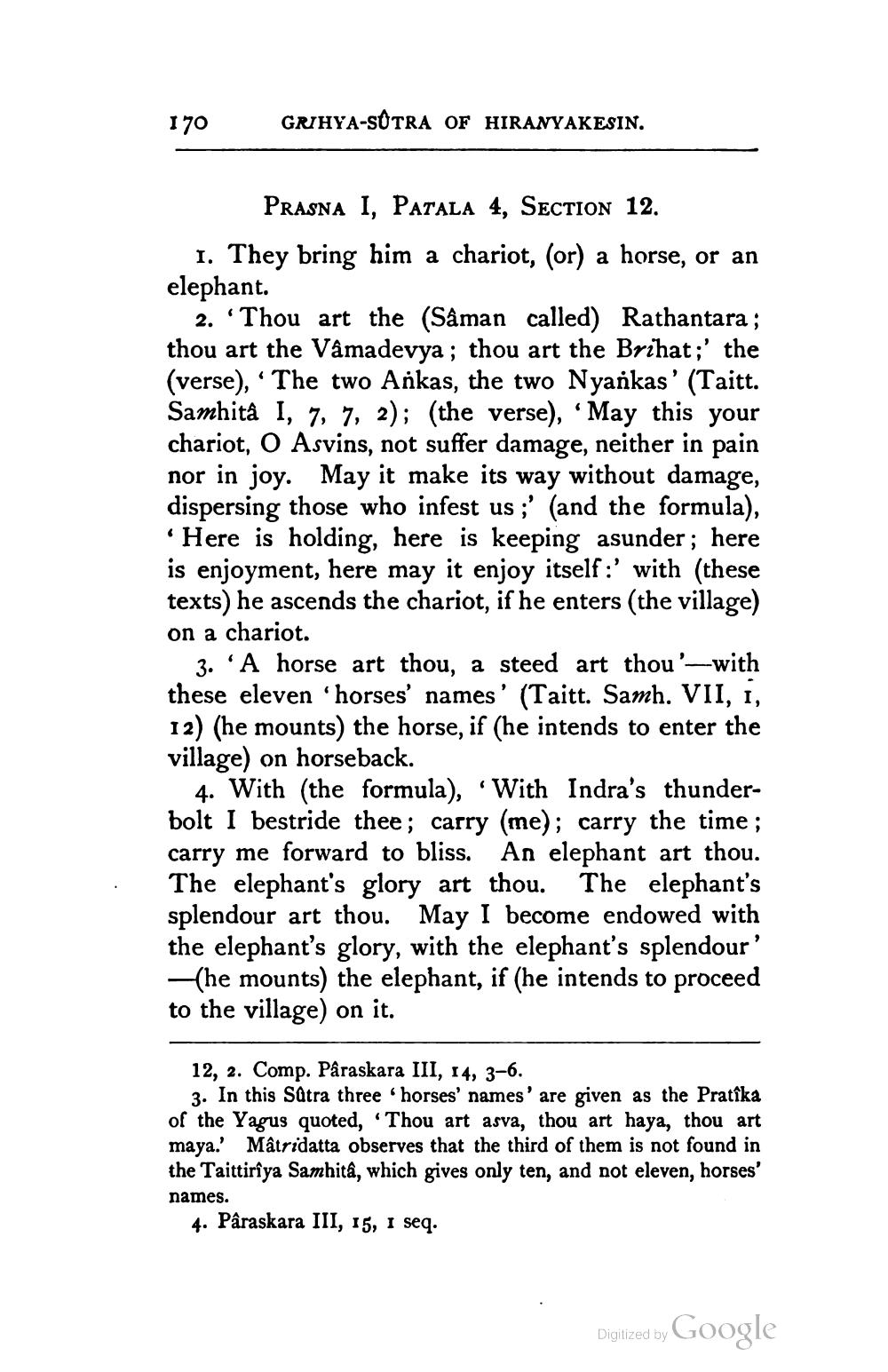________________
170
GRIHYA-SUTRA OF HIRANYAKESIN.
PRASNA I, PATALA 4, SECTION 12.
1. They bring him a chariot, (or) a horse, or an elephant.
2. 'Thou art the (Sâman called) Rathantara; thou art the Vâmadevya; thou art the Brihat;' the (verse), 'The two Ankas, the two Nyankas' (Taitt. Samhitâ I, 7, 7, 2); (the verse), 'May this your chariot, O Asvins, not suffer damage, neither in pain nor in joy. May it make its way without damage, dispersing those who infest us;' (and the formula), 'Here is holding, here is keeping asunder; here is enjoyment, here may it enjoy itself:' with (these texts) he ascends the chariot, if he enters (the village) on a chariot.
3.
A horse art thou, a steed art thou'-with these eleven 'horses' names' (Taitt. Samh. VII, i, 12) (he mounts) the horse, if (he intends to enter the village) on horseback.
4. With (the formula), 'With Indra's thunderbolt I bestride thee; carry (me); carry the time; carry me forward to bliss. An elephant art thou. The elephant's glory art thou. The elephant's splendour art thou. May I become endowed with the elephant's glory, with the elephant's splendour' -(he mounts) the elephant, if (he intends to proceed to the village) on it.
12, 2. Comp. Pâraskara III, 14, 3-6.
3. In this Sûtra three horses' names' are given as the Pratîka of the Yagus quoted, 'Thou art asva, thou art haya, thou art maya.' Mâtridatta observes that the third of them is not found in the Taittirîya Samhitâ, which gives only ten, and not eleven, horses'
names.
4. Pâraskara III, 15, I seq.
Digitized by
Google




